

Sikh Temple
New Delhi, India 2006
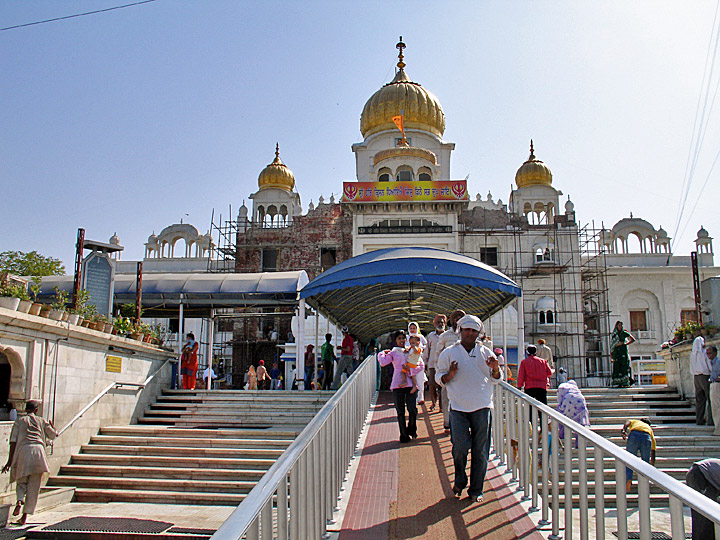
entrance to the Sikh temple
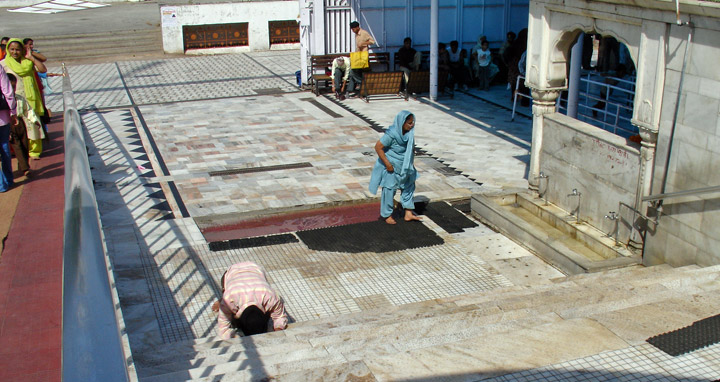
praying on the steps of the temple
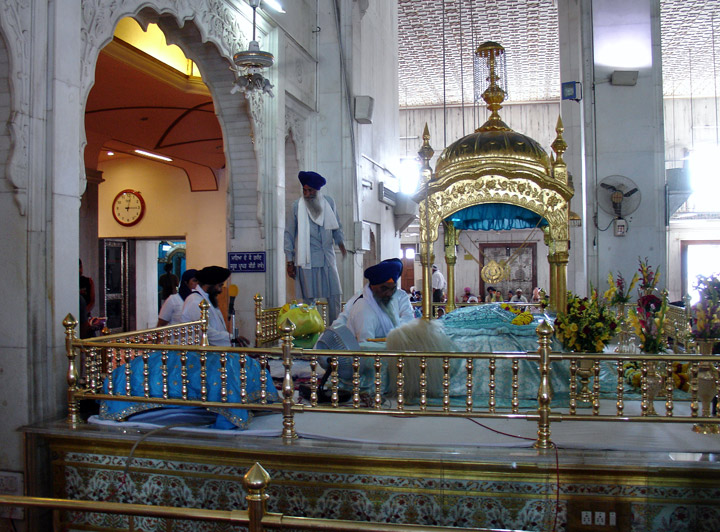
the book in the Sikh temple
Sikhs, followers of the Sikh
religion, centered in Punjab State, in northwestern India. Sikhism is an ethical
monotheism fusing elements of Hinduism and Islam. It was founded by Nanak
(1469-1539), a mystic who believed that God transcends religious distinctions.
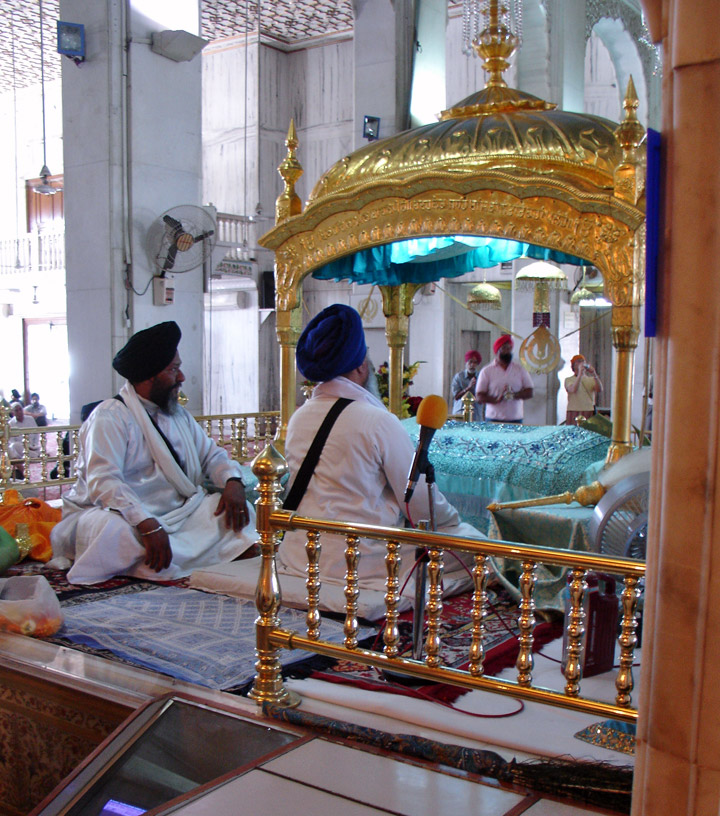
the priest with the book
Influenced by the devotional emphasis
of bhakti Hinduism and Sufi Islam, Sikhism stresses the unity, truth, and
creativity of a personal God and urges union with him through meditation on his
title, the Name (Nam), and surrender to his will. It also advocates active
service rather than the Hindu ideal of ascetic withdrawal. Loyalty and justice
are admired, smoking and intoxicants forbidden. Sikhism also rejects the Hindu
caste system, priesthood, image worship, and pilgrimage, although it retains the
Hindu doctrines of transmigration and karma. The ultimate spiritual authority is
the Adi Granth, consisting of hymns by the ten Sikh gurus (Hindi for "teachers")
and Hindu and Muslim devotional poetry in several languages. All Sikhs may read
the Adi Granth, which is the focus of devotion at the Golden Temple in Amritsar,
the Sikh religious center.

Sikhs are expected to join the Khalsa
(Punjabi for "pure"), a religious and military order. Initiates are "baptized"
by drinking sweetened water stirred with a sword, after which Sikh men take the
surname Singh ("lion") and women take the surname Kaur ("prince," or here,
"princess"). Members of the Khalsa are instructed to observe the five k's: They
must wear four symbols of the Sikh faith-soldiers' shorts (kaccha), an iron
bangle (kara), a steel sword (kirpan), and a comb (khanga)-and they must not cut
their hair (kes).
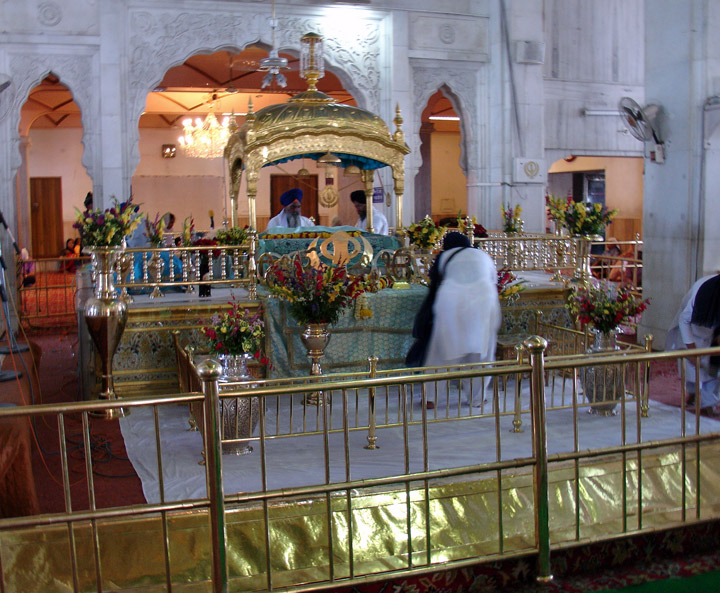
Nanak, the saintly first guru, wandered over India seeking
converts. He was succeeded by nine gurus, the office staying within the family
line of the fourth guru, Ram Das. Ram Das was also the founder of the Golden
Temple. The fifth, Arjan Dev, compiled the Adi Granth in 1604. As the Sikhs
became a distinct religious community, they took up arms against persecution by
Hindus and by Muslim rulers of the Mughal Empire. Opposing Mughal tyranny, the
tenth guru, Gobind Singh, formed the Khalsa in 1699. During the decline of the
Mughals, the Sikhs, led by the warrior Ranjit Singh, created a powerful state in
the Punjab about 1800 that eventually threatened British-controlled India. After
internal dissension and two wars the Punjab was annexed by the British in 1849.
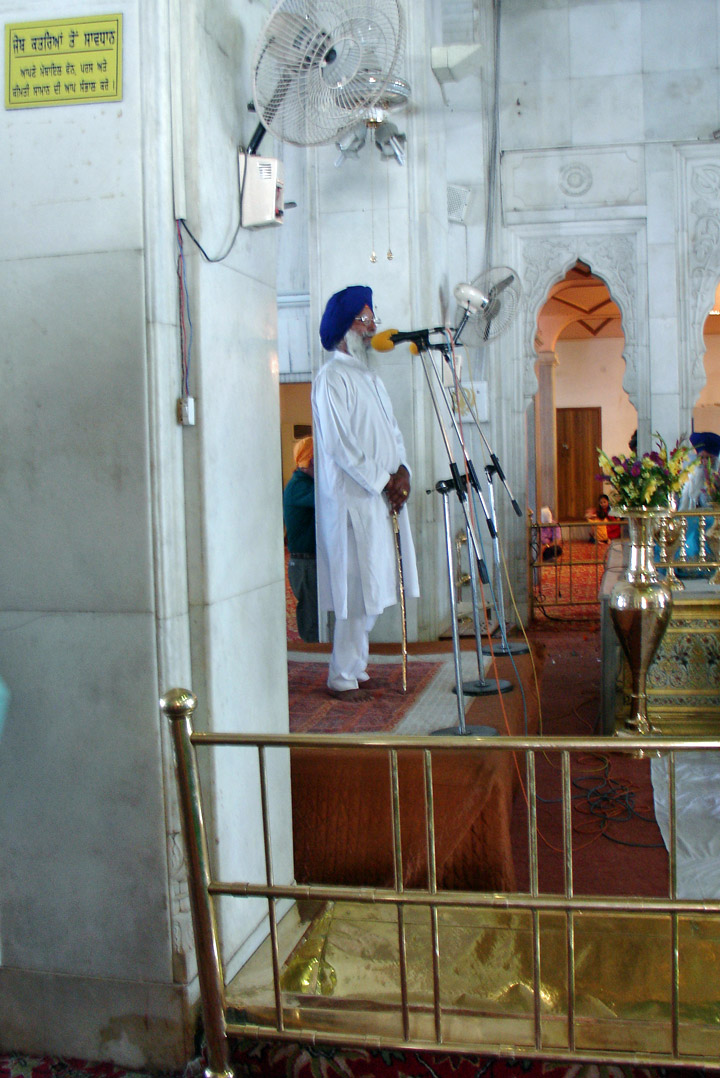
telling the story of the book
The British governed the Sikhs fairly and, in return for their loyalty during
the Sepoy Rebellion of (1857-1859), gave them preferential land grants. The
Sikhs gained wealth and a great reputation as soldiers and policemen. During the
creation of an independent India in 1947, the Sikhs lost their privileges and
found that Punjab was to be divided between India and Pakistan. Many Sikhs
migrated east to be on the Indian side of the partition. In response to years of
agitation, the Indian government created Punjab as a single Punjabi-speaking
state in 1966; it remains the home of most of India's more than 16 million
Sikhs. Terrorism by Sikh separatists demanding greater autonomy led the Indian
government in June 1984 to send in troops to seize the Golden Temple from Sikh
extremists, who vowed to avenge the violence. Sikh members of Prime Minister
Indira Gandhi's personal guard were implicated in her assassination on October
31. In 1985 an accord was finally reached with the Indian government on
expanding Punjab. Sikh terrorists then stepped up their activities, demanding
the establishment of a Sikh state, Khalistan. In 1992 the government sent in
police and army reinforcements and reestablished its authority in Punjab.
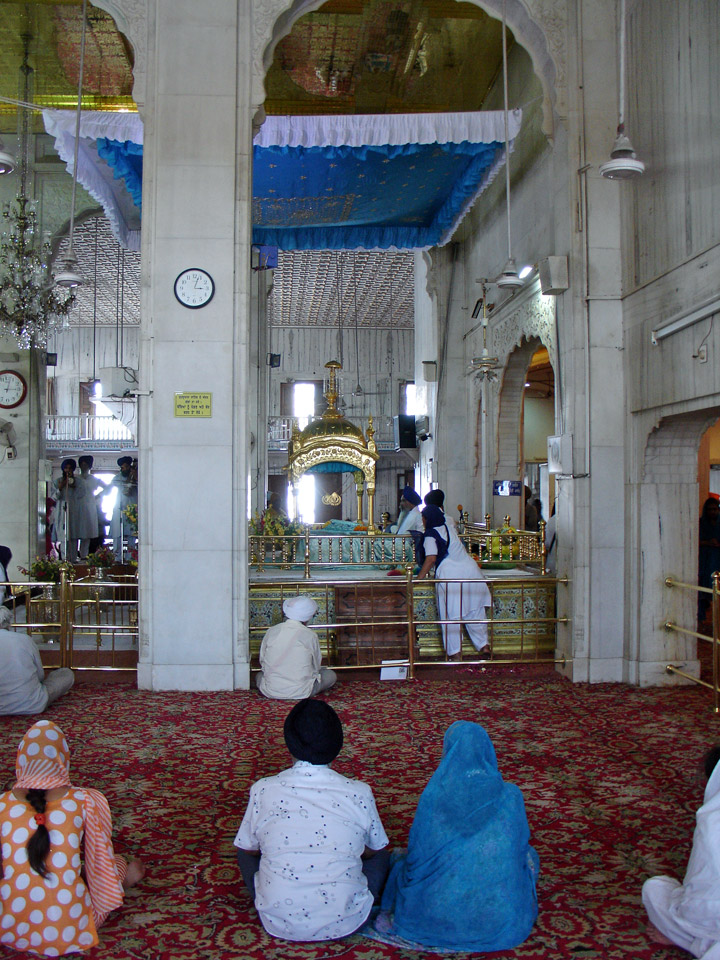
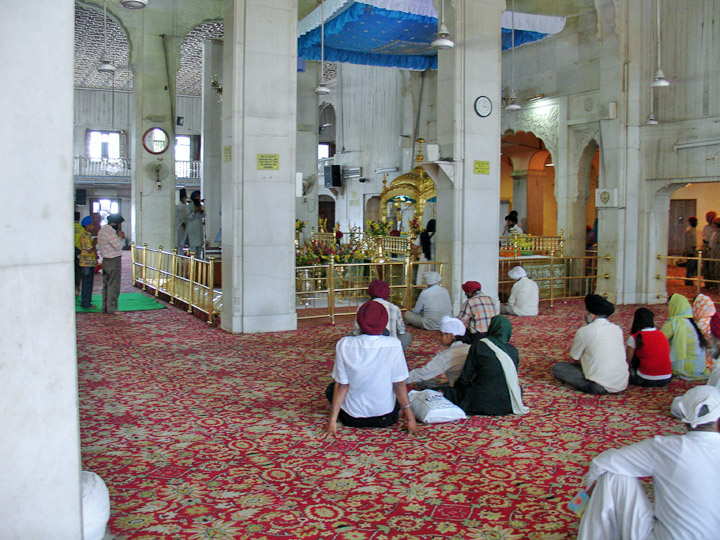

worshiping the book
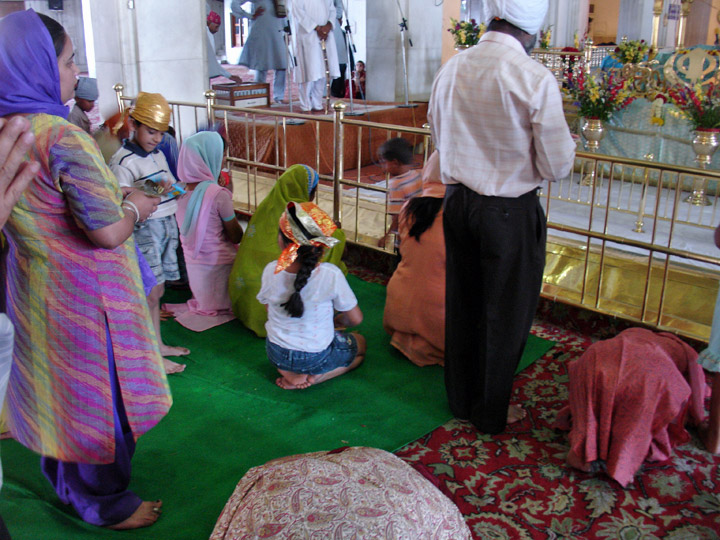
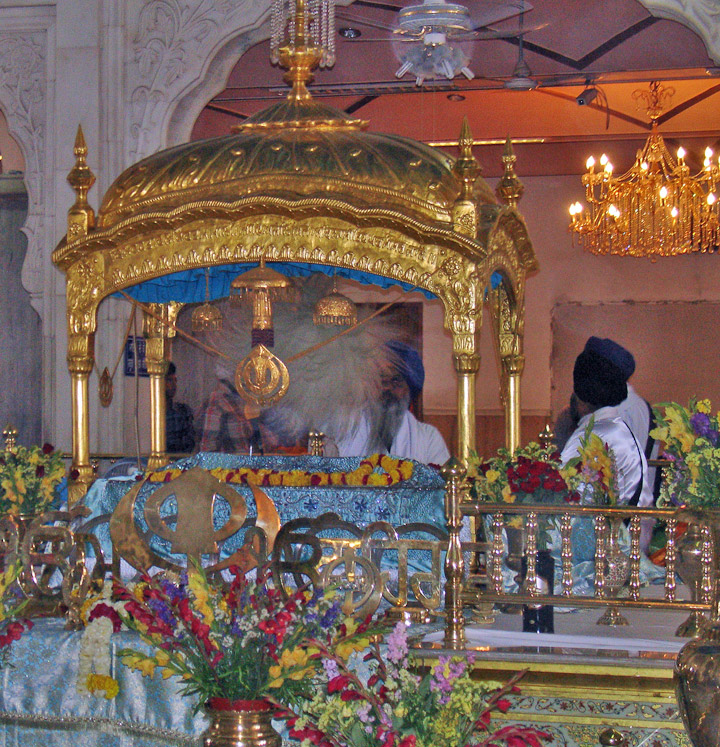
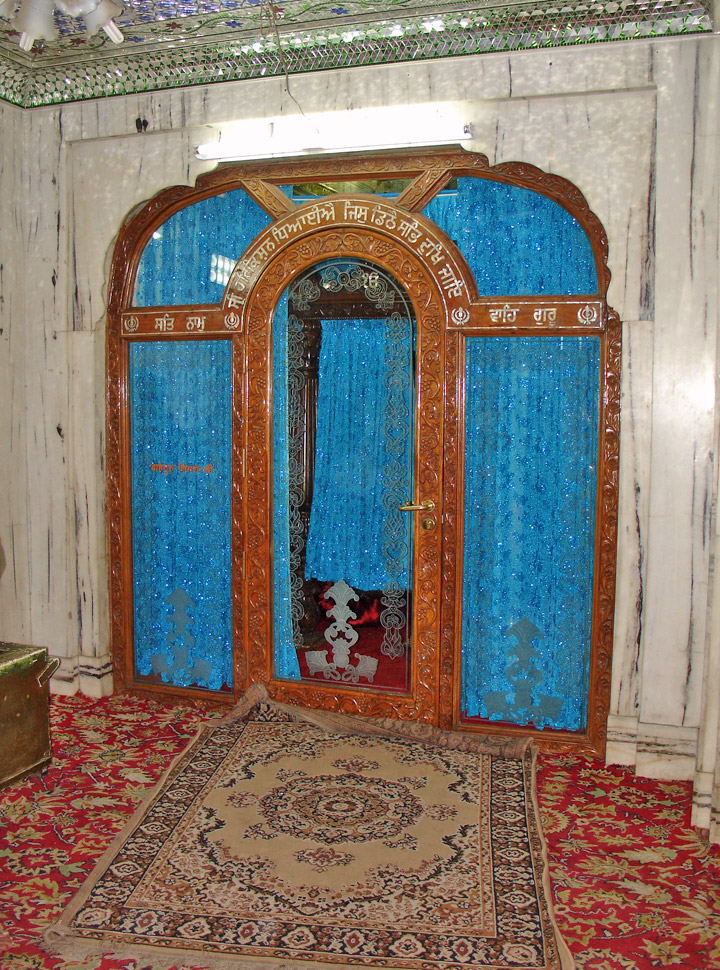
where the book "sleeps" at night
(an air conditioned room with a soft bed)
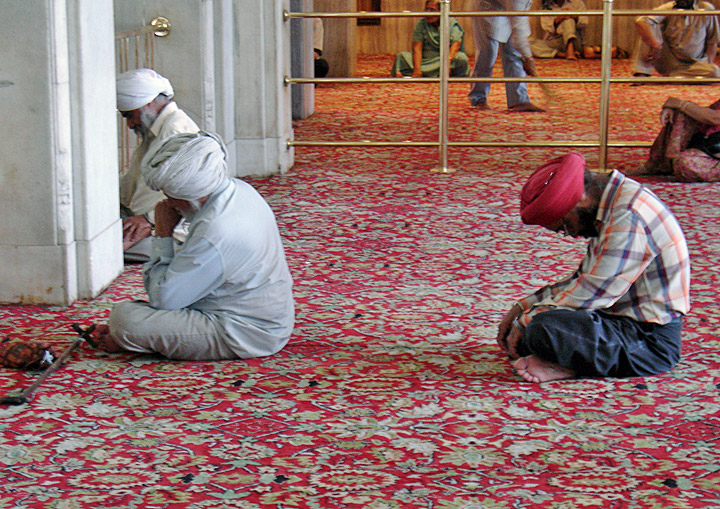
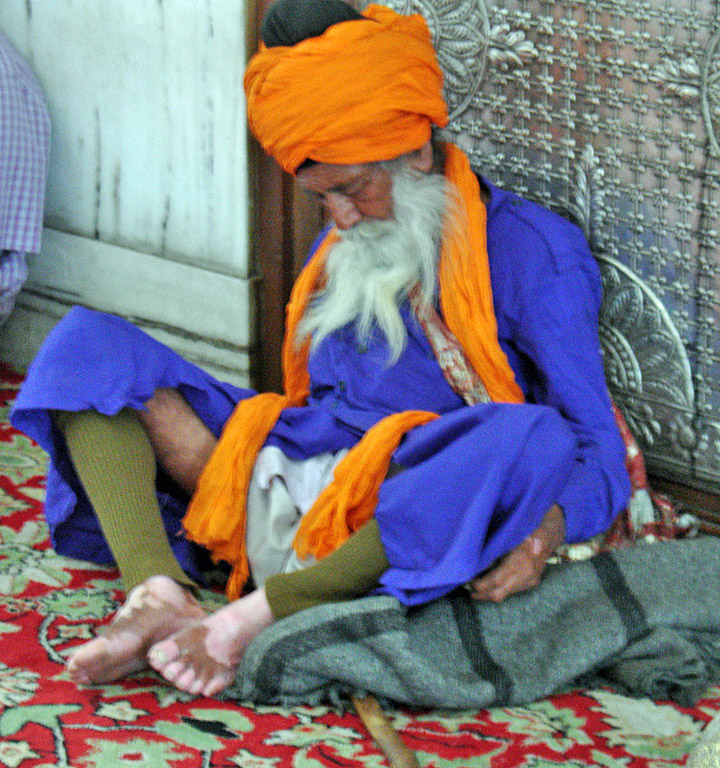
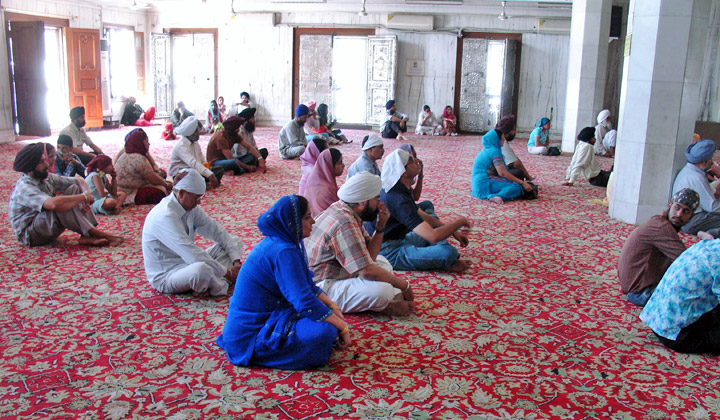
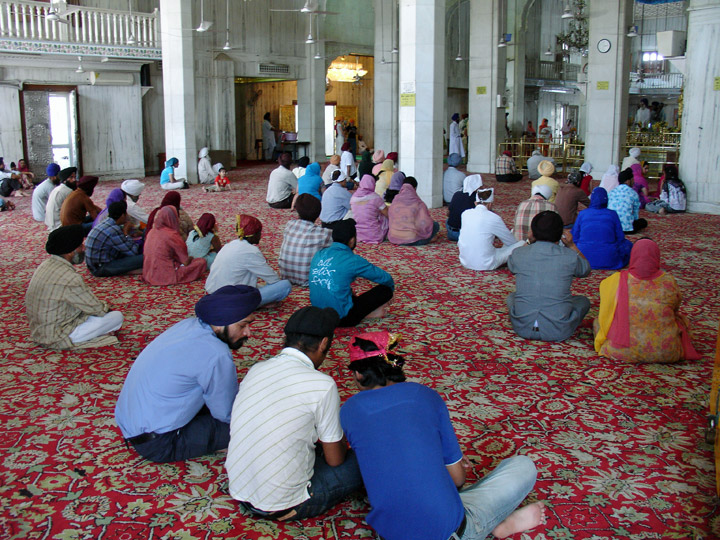
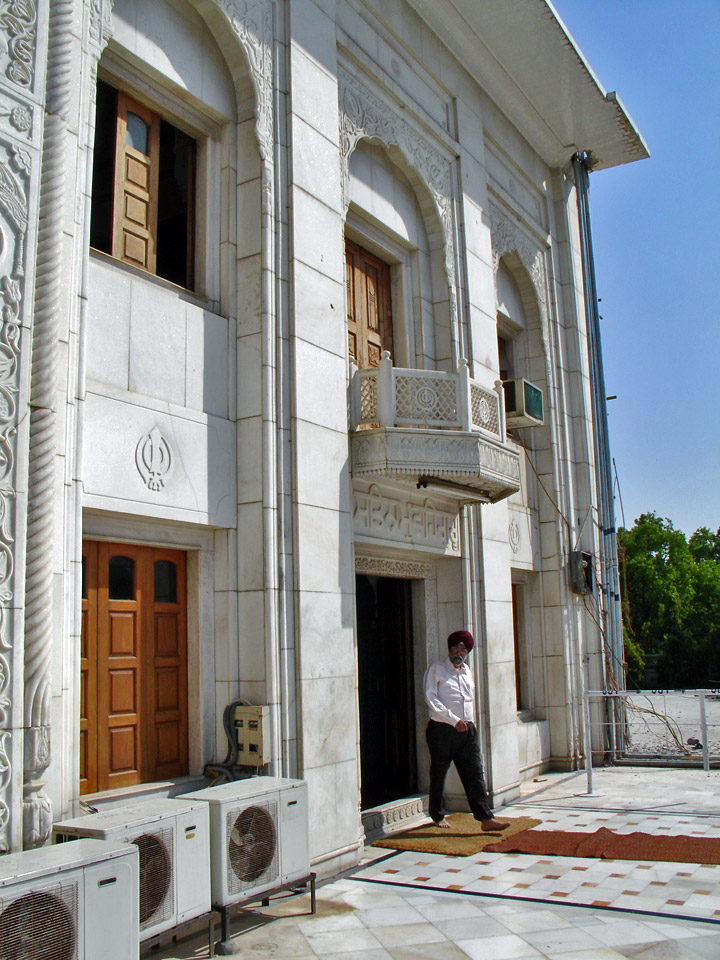
side entrance
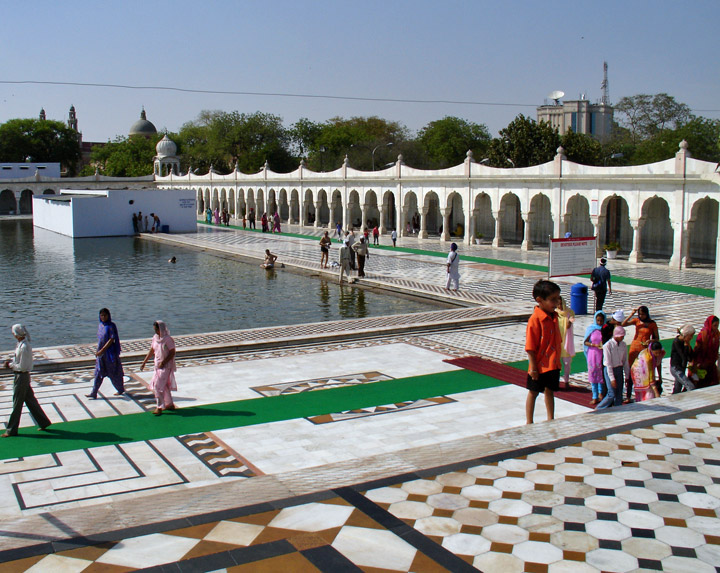
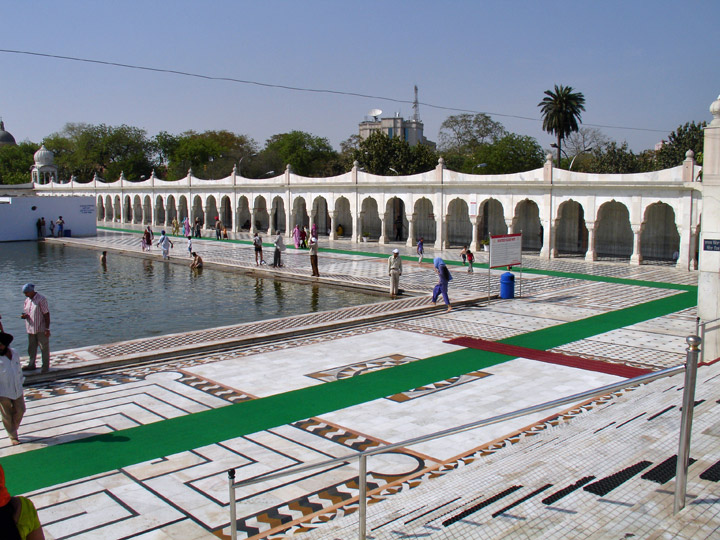
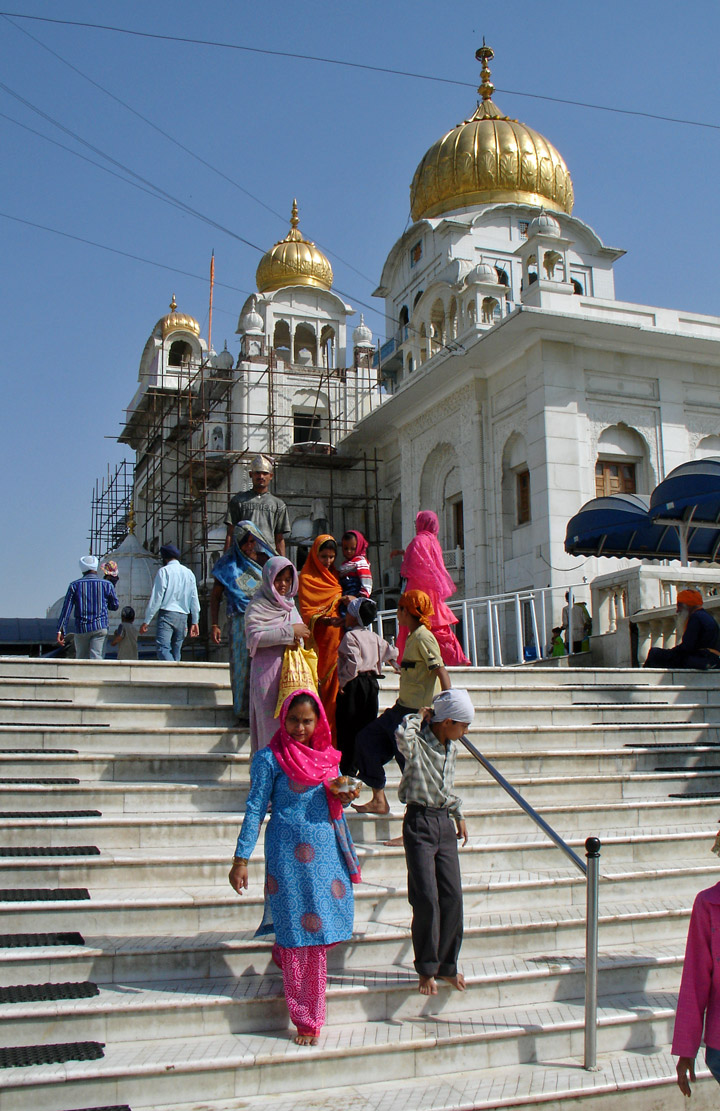


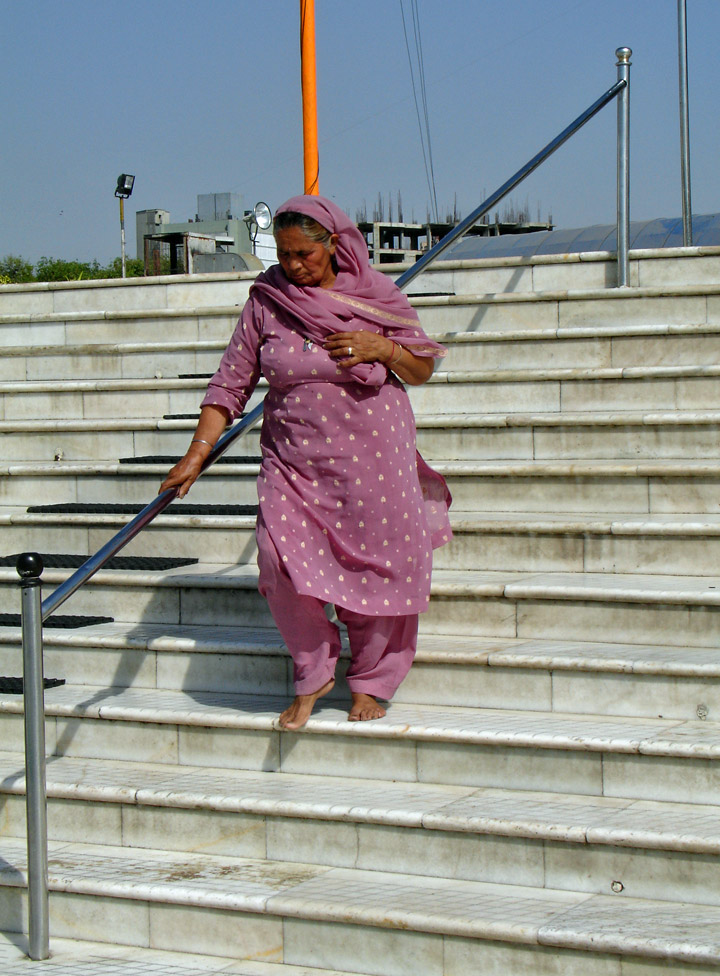
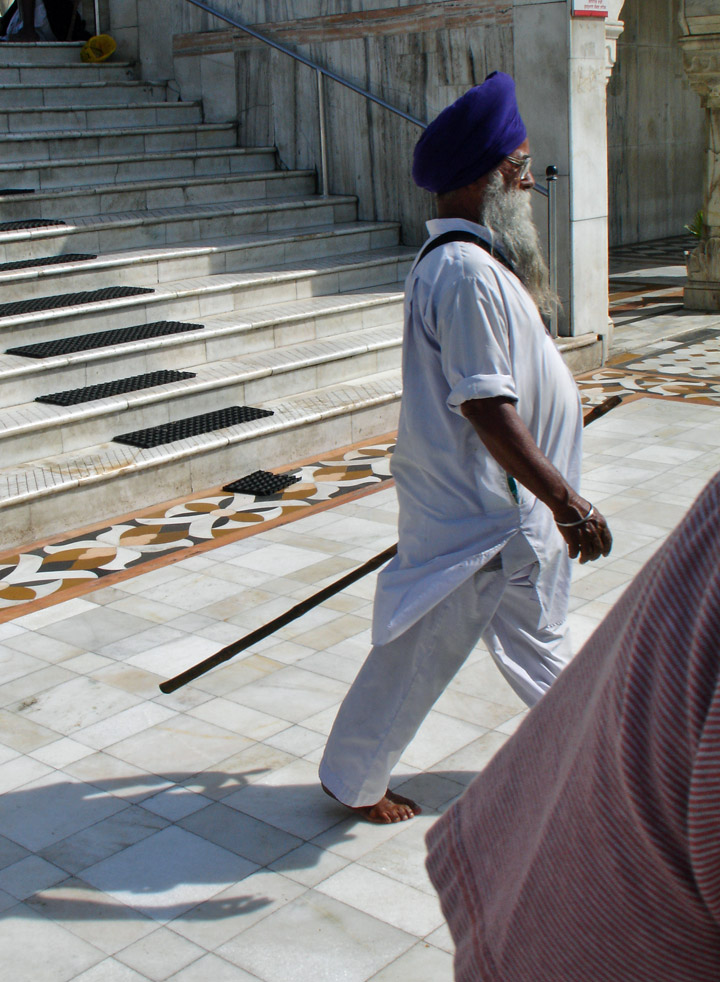
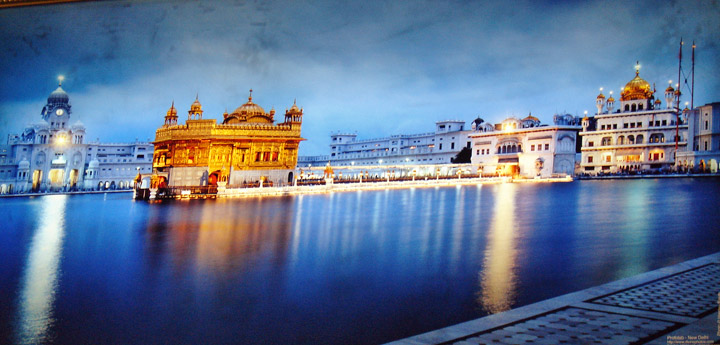
Painting of the Golden Temple
Located in Amritsar, a city in the
Punjab state of northwestern India, the Golden Temple serves as the most
important house of worship for the Sikhs. Originally built in 1604, the temple
sustained repeated damage from attacks by Afghan invaders. During the early
19th-century reign of Maharaja Ranjit Singh, the temple was rebuilt using
marble, copper, and an overlay of gold foil. The temple sits on a small island
and connects with land on the west by way of a marble causeway, foreground.
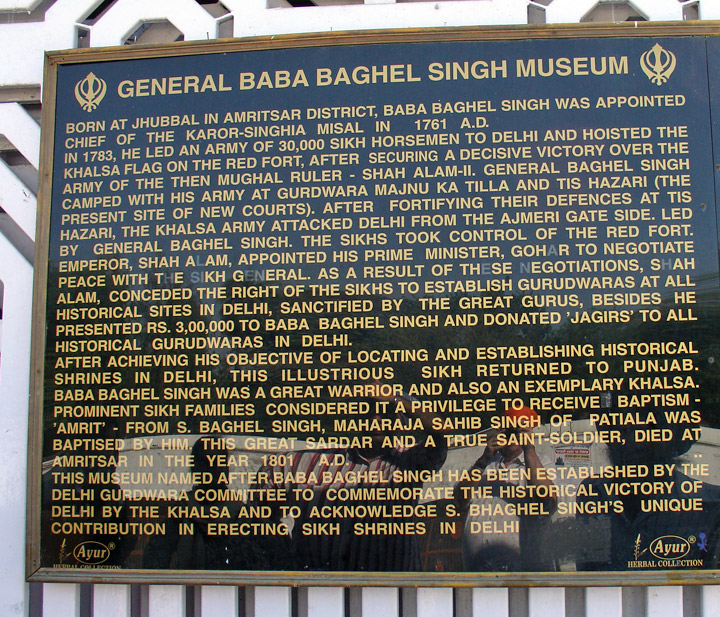
Museum of the Temple